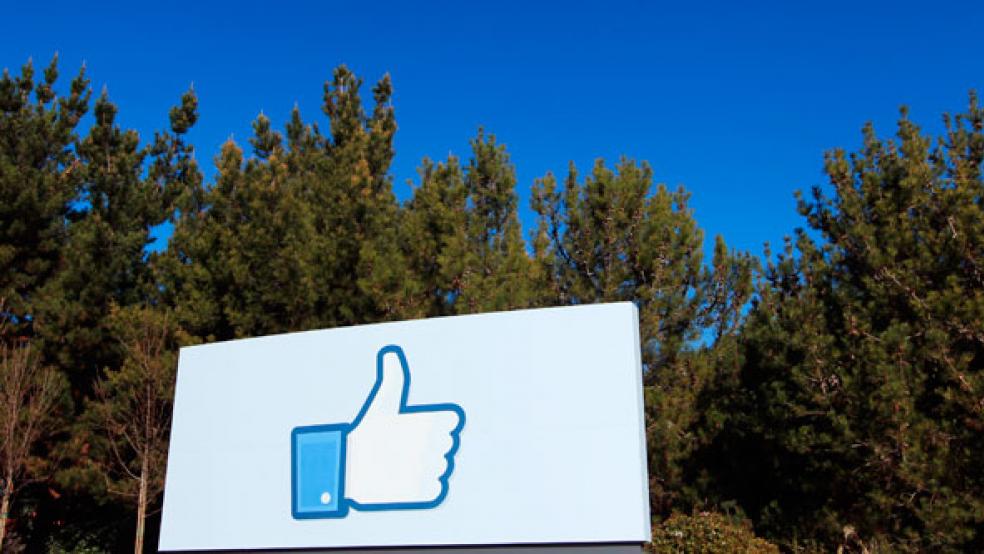Followers of Facebook (NASDAQ:FB) are used to big numbers, but here’s a good one: The company has gained 100 million monthly users in just two years by putting some effort into a stripped-down interface designed to introduce the social network to mobile Internet newbies in the emerging world.
Those users will give a nice boost to the usage numbers on Wednesday, when Facebook announces its quarterly earnings. In its last earnings report, in March, the company said that its overall mobile audience had reached 751 million worldwide, up more than 50 percent from a year earlier.
"Facebook for Every Phone" has gotten little attention here in the U.S. It’s safe to say that no one you know has ever seen it. It is designed for first users of any of 3,000 or so brands and variations of low-end feature phones that are sold throughout the emerging world for as little as $20.
RELATED: FACEBOOK HAS NEW COMPETITION IN THE MOBILE RACE
They are sometimes called “dumbphones,” but that’s pretty dumb in itself. They are inexpensive, data-frugal phones that offer Internet access and voice calls, but no frills or third-party apps, and certainly no 41-megapixel cameras. Granted, the current monetary value of those 100 million users is precisely zero to Facebook. This version doesn’t even have ad space as of yet.
But, as eMarketer executive Clark Fredricksen told the New York Times, “In a lot of foreign markets, people think that the Internet is Facebook.” Put another way, “In a lot of foreign markets, people do not think that the Internet is Google (NASDAQ:GOOG),” or Yahoo (NASDAQ:YHOO), or any of the other companies that are scrambling to add users and attract advertisers outside the US and Europe.
The potential audience is not trivial. In India alone, 250 million phones are now sold every year.
Fittingly, the announcement of the 100 million milestone was made by Ran Makavy, “Growth Manager” of Facebook and a co-founder of Snaptu, the Israeli company that created the platform adapted for Facebook for Every Phone. Facebook bought the company in 2011, reportedly for about $70 million.
The marketing of Facebook in emerging nations has included deals with mobile operators for free or discounted data access for its customers — a key issue for many potential users. These deals notably include one with Nokia (NYSE:NOK) for unlimited data-free Facebook access in Africa and India on its $99 Asha 501 phone.
Understanding the individual markets is key, not only for Facebook and its advertisers, but for the many mobile device manufacturers jostling for action in the emerging world.
The British newspaper The Independent looked into the Indian phone market and found a different world. The vital question for any mobile device shopper there, even above sticker price, is trade-in value. The 2G network is acceptable because it’s the only affordable option. And the most coveted device is the jumbo seven-inch tablet with voice capabilities. Nobody thinks you look foolish with a giant plastic square plastered to your ear. Wise consumers in India do not buy multiple devices when one will do.
The fact is, there are plenty of consumers in the “first world” that could use a price break, too. That’s why AT&T (NYSE:T) has announced that it will offer a $99 no-contract deal in the U.S. for another Nokia model, the Lumia 520.
The growth of the low-end mobile device may offer some consolation to investors mourning the end of the first wave of smartphone sales. There’s a whole world out there that wants and needs a low-cost phone that is not a data hog.
Nobody can expect a fast payoff, though. For Facebook, mobile advertising overall accounted for about 30 percent of ad revenue in the first quarter. Investors will be looking for that figure to creep up in the second quarter. But there are concerns that Europe’s economic troubles will hamper international growth. And mobile advertising still isn’t drawing the big bucks from advertisers.
For the quarter, analysts expect earnings of $.14 per share on revenue of $1.62 billion. The company does not provide quarterly guidance.
This article originally appeared at Minyanville.com.
Read more from Minyanville:
Apple Inc. Will Regret Throwing Its Suppliers Under the Bus
What's Next for Tesla Motors? 7 Expert Investors Make Predictions
Global Heat Map Shows Where People Tweet From iPhones Vs. Androids




